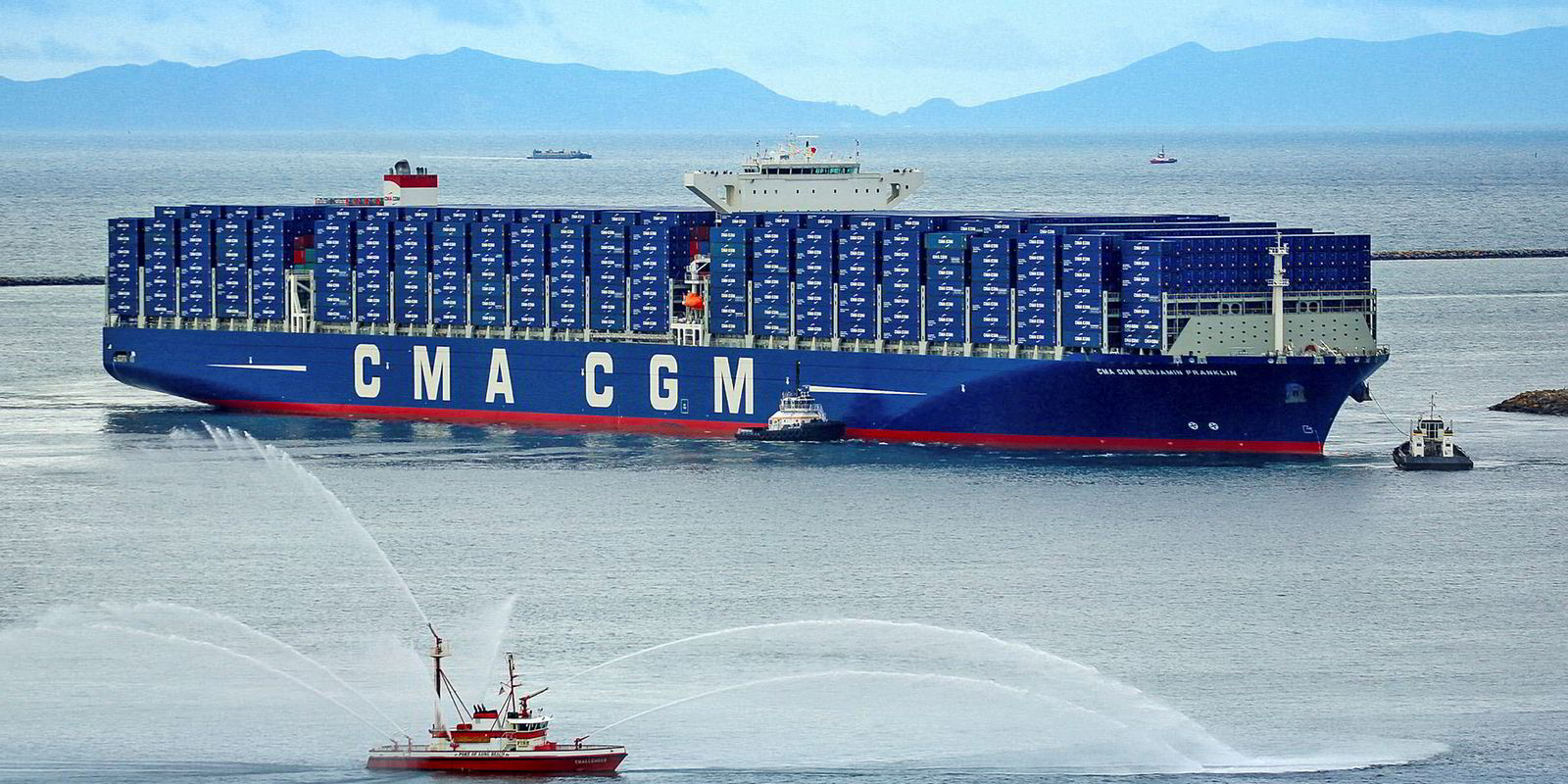Container freight rates have started the year on a firmer footing, as an uptick in demand and low-sulphur fuel surcharges kick in.
Rates on major east-west trades have risen for the first time in weeks as shippers seek to replenish stocks after the Christmas break.
Carriers are also said to be cashing in on an increase in demand caused by post-Christmas replenishment and the looming Chinese New Year shutdown.
Rates from China to the US West Coast increased by 16% to $2,003 per 40-foot (feu) container in the week ending 6 January. Rates from China to the US East Coast were up 13% to $3,137 per feu, according to the Freightos Baltic Index. Prices from China to North Europe were 13% higher at $1,598 per feu.
More rises are expected on the Asia-Europe trade this month, as carriers have announced further surcharges.
“Coming into contract renegotiation time, carriers will be hoping that spot prices stay high,” Freightos vice-president Philip von Mecklenburg-Blumenthal said.
The trades are beginning to feel the impact of the application by carriers of fuel surcharges linked to the IMO’s sulphur cap, which comes into force on 1 January 2020.
Several carriers led by Maersk Line and Hapag-Lloyd have been introducing the surcharges a year early under a variety of different names.
Surcharges ‘can add 10%’
These surcharges could add between 5% and 10% to rates, according to Freightos’ estimates.
But container logistics players, including Kuehne + Nagel executive vice president Otto Schacht, have suggested that the expected freight rate increases are unlikely to trouble shippers, which are used to much larger fluctuations.
Speaking at the Hansa Forum in Hamburg, Hapag-Lloyd chief operating officer Anthony Firmin said the reaction from shippers to date has been “surprisingly positive”.
The rise in freight rates since the start of the year reverses several weeks of declines in the transpacific trade. But it remains to be seen whether the stronger rates will hold in 2019, with uncertainty over US-China trade relations and slower growth in global trade volumes, according to Alphaliner.
The transpacific trade boomed in the second half of last year as shippers stocked up to beat the possible increase in tariffs resulting from the threat of a trade war between China and the US.
However, the unusually high surge in transpacific cargoes could mean fewer shipments in the first quarter this year when annual contract talks begin, according to Drewry.
Freightos suggested that the 90-day truce between Beijing and Washington on the latest tariff increase caused transpacific pricing to drop in December.
Container traffic from Asia to North Europe has been trending upwards since October, even if pricing gains have so far been minimal for carriers, Drewry said, suggested that they may be looking for a small rise in contract rates this year.
Carriers are more intent on convincing the market of the need to share the fuel burden arising from the IMO 2020 rules, Drewry added.





